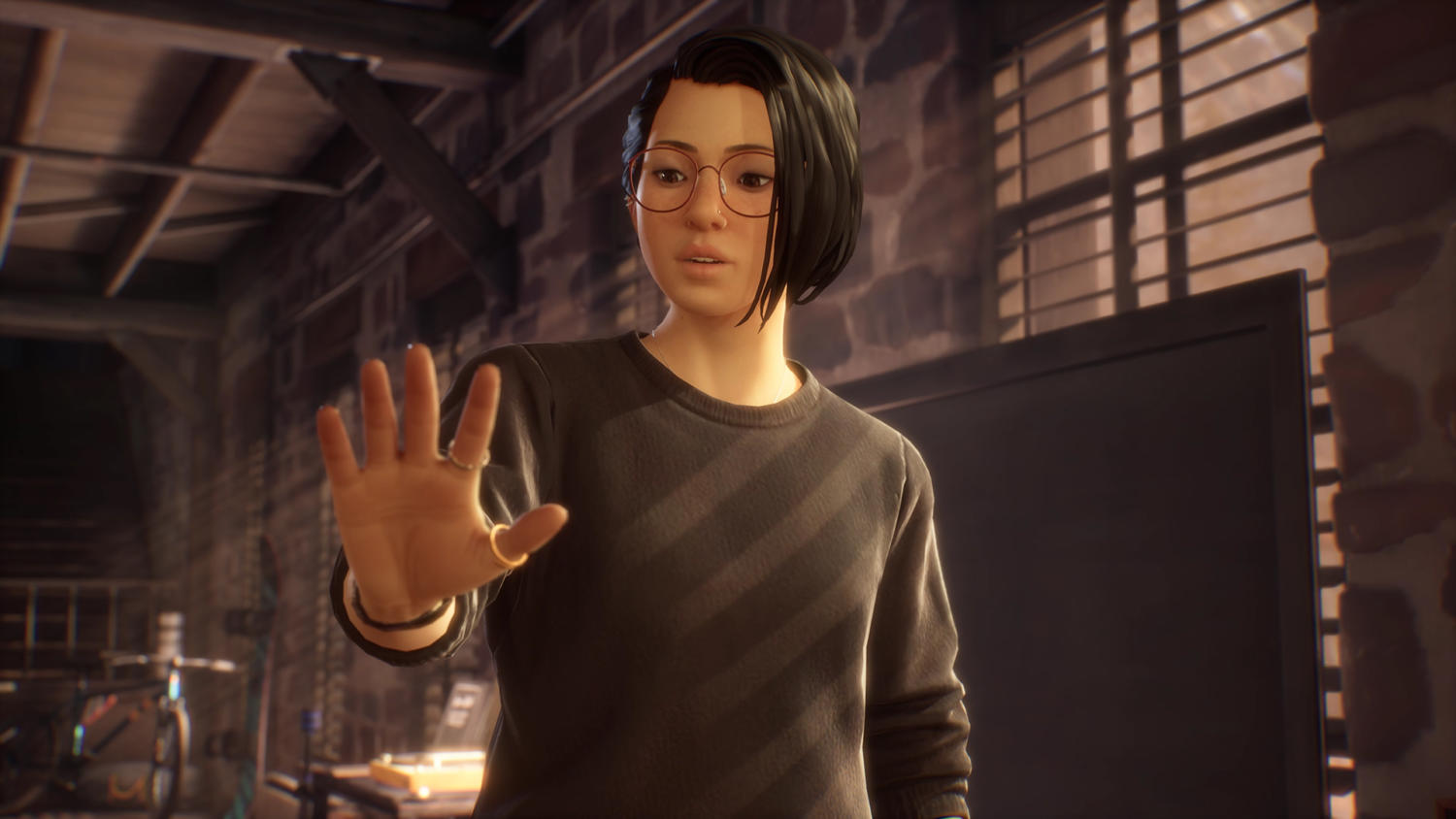Embrace Empathic Abilities in ‘Life is Strange: True Colors’
Uncover the mystery behind your brother’s death in Haven Springs
The newest addition to the “Life is Strange” franchise includes queer, Asian-American representation as players explore the fictional small town of Haven Springs. Rating: A- Photo Credit: Square Enix
February 18, 2022
Switch players no longer have to turn to gameplay videos to get their fix for “Life is Strange: True Colors”, as it’s finally hit the Nintendo eShop three months after the initial release on all other platforms. The third entry to the adored “Life is Strange” franchise follows a new protagonist, Alex Chen, as she arrives in the fictional small town of Haven Springs, Colorado to reunite with her brother, Gabe. Alex is determined to bring Typhon, a multimillion dollar mining company, down after Gabe faces his untimely death in the mountains as a result of mining explosions.
As expected, the game has an exceptional, award-winning soundtrack (even featuring mxmtoon as Alex’s singing voice) composed by Angus & Julia Stone and beautiful graphics. The small atmospheric cut scenes, a staple to the franchise, live up to the expectations and are a perfect chance to contribute to world building. Roaming around Haven’s main street, filled with locally owned shops and restaurants, brings a unique, close-knit feel to this game.
With the new and exaggerated powers of an empath, “True Colors” allows players to read and/or submerge themselves into other characters’ thoughts and feelings. Interacting with meaningful objects in their surroundings gives Alex the opportunity to understand the root of their emotions, and learn more about the character or history of Haven. This brings entirely new depths to the writing of side characters, unlike previous volumes. How players interact with any of these characters leaves lasting effects, but the payoff isn’t as big as I’d hoped. The only benefit of helping them is for a small, yet important, action at the end, but there would not have been a significant shift in the ending had you not taken the time to befriend these characters.
In regards to the story, it took a while to really get invested. The first couple of episodes are heavily dedicated to world building and character development, rather than progressing Alex’s main goal. However, without this slower pacing, I would not have gotten as attached as I did to any of the characters. In familiar fashion, “True Colors”stays loyal to the franchise by including emotional twists and suspenseful mind games. Diving into characters’ traumatic experiences allows the player to connect with them on a more personal level.
Actions in the game may not have extensive butterfly effects compared to other decision-based games, but dominant decisions were quite difficult for me to make. In these kinds of games, the path I’d like to take is clear with little contemplation. When facing these decisions, the choices provided presented significant benefits or punishments for the player. Most come down to whether or not preserving Alex’s mental health is more important than helping the characters find reasonable solutions to their problems; true to one of the many struggles a real-life empath may face.
For a story not at all revolving around Alex’s bisexuality or upbringing in an Asian-American household, there are still many notable points of representation. For example, in Alex’s apartment, there is a small shrine and burning of incense for Gabe, something my family also does for passed loved ones. Additionally, the writing for both love interests, Ryan and Steph, is well developed. Neither felt forced, unlike some games/shows with queer characters who are often treated by the writers as an afterthought, and I honestly had a really hard time choosing between the two.
Overall, I’m more than satisfied with the addition True Colors makes to the franchise. Even with minimal possibilities for the ending, I was able to emotionally connect to the story a lot more than past games. Whether it was because I have more perspective on the world since I played the original game in 2014, I can relate to points of Alex’s trauma or both, this story definitely induced much more tears than expected. With an average play time of about 10 hours, True Colors may not be entirely worth the $60, but an amazing game to pick up while on sale.








